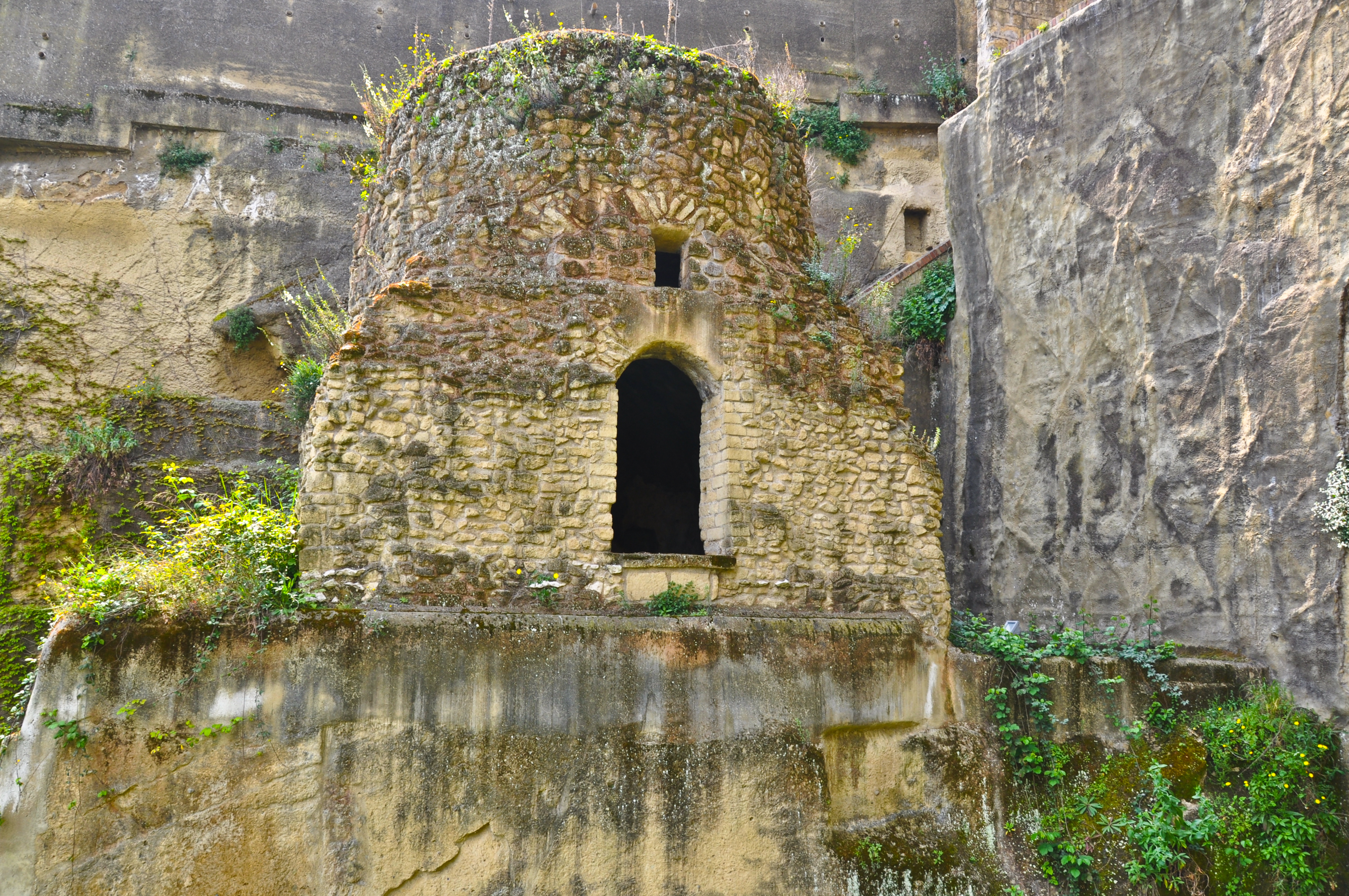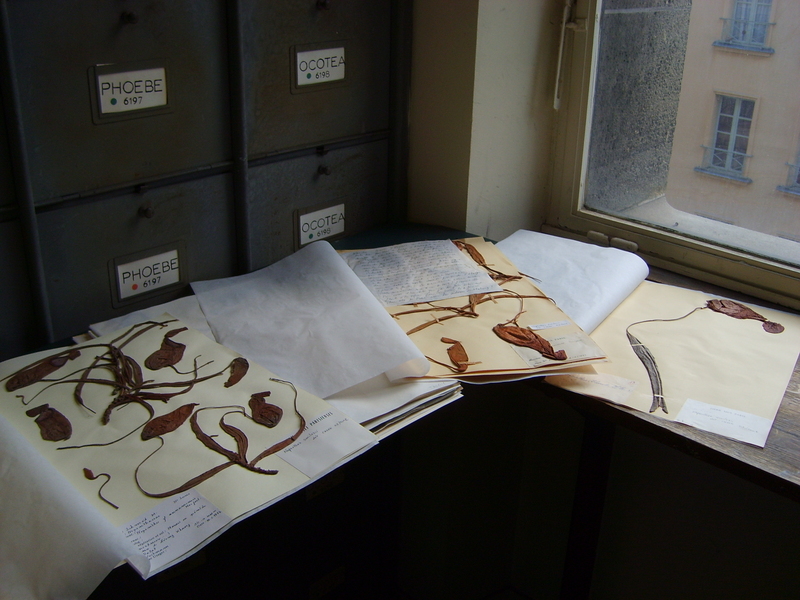|
Luis Sodiro
Luis Sodiro (1836–1909) was an Italian Jesuit priest and a field botanist from Vicenza who described a large number of species from the area around Quito, Ecuador in the early 20th century. He was perhaps the first person who collected in this region and he described at least 38 species from Esmeraldas, a region in Ecuador. Biography He was born in Italy in 1836, in the town of Vicenza in the province of Venice. When he was twenty years old, in 1856, he entered the Order of the Society of Jesus, and went to study theology at the Innsbruck, Austria. He also studied philosophy, languages and natural sciences. He was one of the first botanists to truly collect and identify specimens in the field. He is one of the protagonists of the ''Golden age of Ecuadorian botany'' which started in 1870 when Ecuadorian Ecuadorian President and aristocrat Gabriel García Moreno brought members of a German Jesuits Order to manage the National Polytechnic School and the Quito Astronomical Ob ... [...More Info...] [...Related Items...] OR: [Wikipedia] [Google] [Baidu] |
Botanist
Botany, also called plant science, is the branch of natural science and biology studying plants, especially Plant anatomy, their anatomy, Plant taxonomy, taxonomy, and Plant ecology, ecology. A botanist or plant scientist is a scientist who specialises in this field. "Plant" and "botany" may be defined more narrowly to include only land plants and their study, which is also known as phytology. Phytologists or botanists (in the strict sense) study approximately 410,000 species of Embryophyte, land plants, including some 391,000 species of vascular plants (of which approximately 369,000 are flowering plants) and approximately 20,000 bryophytes. Botany originated as history of herbalism#Prehistory, prehistoric herbalism to identify and later cultivate plants that were edible, poisonous, and medicinal, making it one of the first endeavours of human investigation. Medieval physic gardens, often attached to Monastery, monasteries, contained plants possibly having medicinal benefit. ... [...More Info...] [...Related Items...] OR: [Wikipedia] [Google] [Baidu] |
Corazón (volcano)
Corazón (Spanish: "heart") is an inactive, eroded stratovolcano of Ecuador, situated about 30 km southwest of Quito in the western slopes of the Andes. See also * Lists of volcanoes **List of volcanoes in Ecuador This is a list of active and extinct volcanoes in Ecuador. In Ecuador, National Polytechnic School (Ecuador), EPN monitors the volcanic activity in this Andean nation. Mainland Galápagos Islands References Volcano page, Institu ... References External links Corazon 2003 "El Corazon, Ecuador" on Peakbagger* Inactive volcanoes Stratovolcanoes of Ecuador Four-thousanders of the Andes Pleistocene stratovolcanoes {{Ecuador-geo-stub ... [...More Info...] [...Related Items...] OR: [Wikipedia] [Google] [Baidu] |
José Plácido Caamaño
José María Plácido Caamaño y Gómez-Cornejo (5 October 1837 – 31 December 1900) was an Ecuadorian diplomat and served as President of Ecuador 23 November 1883 to 1 July 1888. Caamaño was born in Guayaquil. He was the grandson of Spanish explorer Jacinto Caamaño. He studied law and theology in the seminary of his native city, and was educated in Quito. Subsequently, he was mayor of Guayaquil, and chief of the custom-house service. He was a member of the Progresista faction, a liberal Catholic party. Caamaño was also a conservative. The unity between the Conservatives and Liberals was achieved during the War of the Restoration but it was short-lived. President Antonio Flores tried to end the conflict between Conservatives and Liberals by creating a moderate Republican Party. Ecuador then had political stability for 12 years, but the conservatism and moderation gave way to the Liberal Revolution of 1895. He was banished in 1882, went to Lima, organized a revolutionary ex ... [...More Info...] [...Related Items...] OR: [Wikipedia] [Google] [Baidu] |
Quito Botanical Garden
Quito Botanical Garden () is a park, botanical garden, arboretum and greenhouse of 18,600 square meters in the city of Quito, Ecuador. It houses species of plants of the country (Ecuador is among the 17 richest countries in the world in native botanical species, an updated study on the classified Ecuadorian flora determined the existence of 17,000 species). The identification code of the ''Botanical Garden Quito ''as a member of the Botanic Gardens Conservation International (BGCI), as well as the initials of its herbarium, is QUITO. ...
|
Ferns
The ferns (Polypodiopsida or Polypodiophyta) are a group of vascular plants (plants with xylem and phloem) that reproduce via spores and have neither seeds nor flowers. They differ from mosses by being vascular, i.e., having specialized tissues that conduct water and nutrients, and in having life cycles in which the branched sporophyte is the dominant phase. Ferns have complex leaves called megaphylls that are more complex than the microphylls of clubmosses. Most ferns are leptosporangiate ferns. They produce coiled fiddleheads that uncoil and expand into fronds. The group includes about 10,560 known extant species. Ferns are defined here in the broad sense, being all of the Polypodiopsida, comprising both the leptosporangiate ( Polypodiidae) and eusporangiate ferns, the latter group including horsetails, whisk ferns, marattioid ferns, and ophioglossoid ferns. The fern crown group, consisting of the leptosporangiates and eusporangiates, is estimated to have origin ... [...More Info...] [...Related Items...] OR: [Wikipedia] [Google] [Baidu] |
Horacio
Horacio \ho-ra-cio\, a masculine given name, is a variant of Horace. The given name Horacio is found sporadically throughout all of Latin America. Horacio is a boy's name with Latin origins said to mean 'timekeeper'. The Portuguese spelling is Horácio. A related name is Horatio. People with the name * Horacio Accavallo (1934–2022), Argentine boxer * Horacio Agulla (born 1984), Argentine rugby player * Horacio Ahuett Garza (born 1964), Mexican engineer * Horacio Allegue (born 1972), Spanish rower * Horacio Altuna (born 1941), Argentine comics artist * Horacio Álvarez Mesa (1881–1936), Spanish politician, lawyer and journalist * Horacio Ameli (born 1974), Argentine footballer *Horacio Anasagasti (1879–1932), Argentine engineer *Horacio Marcelo Arce (born 1970), Argentine footballer *Horacio Arruda (born 1960), Canadian physician * Horacio Badaraco (1901–1946), Argentine anarchist and journalist * Horacio Baldessari (born 1958), Argentine footballer * Horacio Barrionuevo ... [...More Info...] [...Related Items...] OR: [Wikipedia] [Google] [Baidu] |
Virgil
Publius Vergilius Maro (; 15 October 70 BC21 September 19 BC), usually called Virgil or Vergil ( ) in English, was an ancient Rome, ancient Roman poet of the Augustan literature (ancient Rome), Augustan period. He composed three of the most famous poems in Latin literature: the ''Eclogues'' (or ''Bucolics''), the ''Georgics'', and the Epic poetry, epic ''Aeneid''. A number of minor poems, collected in the ''Appendix Vergiliana'', were attributed to him in ancient times, but modern scholars generally regard these works as spurious, with the possible exception of a few short pieces. Already acclaimed in his own lifetime as a classic author, Virgil rapidly replaced Ennius and other earlier authors as a standard school text, and stood as the most popular Latin poet through late antiquity, the Middle Ages, and early modernity, exerting inestimable influence on all subsequent Western literature. Geoffrey Chaucer assigned Virgil a uniquely prominent position among all the celebrities ... [...More Info...] [...Related Items...] OR: [Wikipedia] [Google] [Baidu] |
Ignacio De Veintemilla
Mario Ignacio Francisco Tomás Antonio de Veintemilla y Villacís (31 July 1828 – 19 July 1908) was President of Ecuador 18 December 1876 to 9 July 1883. During his presidency, his niece Marieta de Veintemilla Marieta de Veintimilla Marconi (1855-1907) was an Ecuadorian writer, feminist and politician. She served as the first lady of Ecuador Ecuador, officially the Republic of Ecuador, is a country in northwestern South America, bordered by Co ... acted as his first lady. He came to power in a military coup in 1876 which overthrew President Antonio Borrero. After declaring himself dictator, De Veintemilla was overthrown in the 1882-1883 War of the Restoration. References IGNACIO DE VEINTEMILLA VILLACIS. diccionariobiograficoecuador.com 1828 births 1908 deaths People from Quito Presidents of Ecuador {{Ecuador-politician-stub ... [...More Info...] [...Related Items...] OR: [Wikipedia] [Google] [Baidu] |
Antonio Borrero
Antonio María Vicente Narciso Borrero y Cortázar (29 October 1827 – 9 October 1911) was Vice President of Ecuador from 1863 to 1864, and President from 9 December 1875 to 18 December 1876. Antonio Borrero was born in Cuenca, Ecuador and completed much of his education in his home town. He received his law license in Quito. He was elected President in the October 1875 Ecuadorian presidential election, the first free and fair presidential elections in Ecuador history. He served as President of Ecuador for little over a year before being overthrown by General Ignacio Veintemilla in the Revolution of Veintemilla. He was exiled by ''Jefe Supremo'' (Supreme Chief) Ignacio de Veintemilla and lived for a number of years in Peru and Chile. After the overthrow of Veintemilla in 1883, he was allowed to return to Ecuador where he practiced law and worked as a journalist and writer until his death in Quito in 1911. His administration supported free suffrage, press freedom and guara ... [...More Info...] [...Related Items...] OR: [Wikipedia] [Google] [Baidu] |
Aurelio Espinosa Pólit
Aurelio Espinosa Pólit (Quito, July 11, 1894 – February 21, 1961) was an Ecuadorian writer, poet, literary critic, and university professor. He co-founded the Pontifical Catholic University of Ecuador, and he founded the Aurelio Espinosa Polit Museum and Library in Quito. He was a Jesuit priest, in the religious order Society of Jesus The Society of Jesus (; abbreviation: S.J. or SJ), also known as the Jesuit Order or the Jesuits ( ; ), is a religious order of clerics regular of pontifical right for men in the Catholic Church headquartered in Rome. It was founded in 1540 .... He worked on more than 600 pieces and books in his lifetime, and was a renowned translator. He translated into Spanish the complete works of the Latin poets Virgil and Horacio and the Greek playwright Sophocles. He was the first rector of the Pontifical Catholic University, where he also taught Greek language and Greek literature. He was well-versed in Latin and Greek, and spoke English, French, ... [...More Info...] [...Related Items...] OR: [Wikipedia] [Google] [Baidu] |
Herbarium
A herbarium (plural: herbaria) is a collection of preserved plant biological specimen, specimens and associated data used for scientific study. The specimens may be whole plants or plant parts; these will usually be in dried form mounted on a sheet of paper (called ''exsiccatum'', plur. ''exsiccata'') but, depending upon the material, may also be stored in boxes or kept in alcohol or other preservative. The specimens in a herbarium are often used as reference material in describing plant taxon, taxa. Some specimens may be Type (botany), types, some may be specimens distributed in published series called exsiccata, exsiccatae. The term herbarium is often used in mycology to describe an equivalent collection of preserved fungi, otherwise known as a fungarium. A xylarium is a herbarium specialising in specimens of wood. The term hortorium (as in the Liberty Hyde Bailey, Liberty Hyde Bailey Hortorium) has occasionally been applied to a herbarium specialising in preserving material of ... [...More Info...] [...Related Items...] OR: [Wikipedia] [Google] [Baidu] |
Royal Botanic Gardens, Kew
Royal Botanic Gardens, Kew is a non-departmental public body in the United Kingdom sponsored by the Department for Environment, Food and Rural Affairs. An internationally important botanical research and education institution, it employs 1,100 staff. Its board of trustees is chaired by Dame Amelia Fawcett. The organisation manages botanic gardens at Kew in Richmond upon Thames in south-west London, and at Wakehurst, a National Trust property in Sussex which is home to the internationally important Millennium Seed Bank, whose scientists work with partner organisations in more than 95 countries. Kew, jointly with the Forestry Commission, founded Bedgebury National Pinetum in Kent in 1923, specialising in growing conifers. In 1994, the Castle Howard Arboretum Trust, which runs the Yorkshire Arboretum, was formed as a partnership between Kew and the Castle Howard Estate. In 2019, the organisation had 2,316,699 public visitors at Kew, and 312,813 at Wakehurst. Its site ... [...More Info...] [...Related Items...] OR: [Wikipedia] [Google] [Baidu] |



